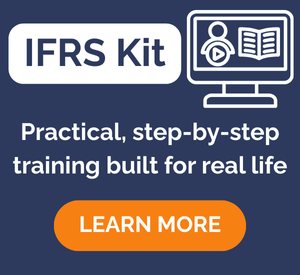How to determine the fair value of a machine?
Market prices of most non-financial assets are usually not available, because these assets might be outdated or highly customized or simply not traded on the market. How do you set the fair value of these assets in this case? Learn here!
Can you capitalize rental expenses of land?
Can you capitalize rental expenses of land under IFRS? And what about the rental of the temporary offices? Find out here!
How to allocate cost of conversion to inventories at abnormal levels of production?
How to allocate fixed overheads to the cost of inventories? What if your production is abnormally high or abnormally low? Find out here with examples included!
Should we create a provision for major overhauling?
How to deal with anticipated major repairs, maintenance, overhauling, regular replacement of small parts and similar items under IFRS? Find out here!
Distinct or not distinct under IFRS 15?
How to determine whether the performance obligations in the contract are distinct or not distinct under IFRS 15? Find out here, with example included!
Accounting for the sales of software licenses with subsequent updates
How to apply 5-step model of IFRS 15 to the licenses of intellectual property? Are there any special considerations? Learn here!
How to account for barter transactions?
How to account for exchanges of inventories or long-term assets under IFRS? Or other barter transactions? Learn here!
How to account for settlement discounts under IFRS 15?
Should you recognize settlement discount as a cost at the time when the payment is received? Or, should you adjust revenue? How? Learn here!
How to determine the discount rate for lessees under IFRS 16?
Can you use the same incremental borrowing rate for all your leases under IFRS 16? Why can’t you use your own implicit rate in the lease if you are a lessee? Learn here!
We rent apartments and supply utilities with rent. Are we agent or principal?
If you are using third-party supplies within your product or service, are you an agent or a principal? How should you recognize revenue in this case? Learn here!
Recent Comments
- Tan Chee Hong on Retention in construction contracts
- Ahumuza on Accounting for discounts under IFRS
- Saheed Kehinde on How to account for intercompany loans under IFRS
- hassan ali on IFRS 15 Explained: Full Guide on 5-step Model for Revenue Recognition + Free Journal Entries Template
- BiG4 on IAS 23 Borrowing Costs Explained (2025) + Free Checklist & Video
Categories
- Accounting Policies and Estimates (14)
- Consolidation and Groups (25)
- Current Assets (21)
- Financial Instruments (56)
- Financial Statements (54)
- Foreign Currency (9)
- IFRS Videos (74)
- Insurance (3)
- Most popular (6)
- Non-current Assets (56)
- Other Topics (15)
- Provisions and Other Liabilities (46)
- Revenue Recognition (27)
- Uncategorized (1)













